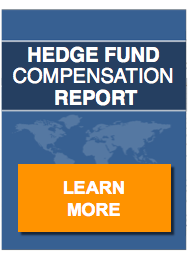Hedge funds have been understandably resistant to social media, suffering from a form of post traumatic stress, as a direct result of the eight decade gag forced on them by the general solicitation ban.
Hedge funds have a reputation for many things but, social media interaction is certainly not one of them. That is slowly changing with an estimated ten percent of hedge funds now having a Twitter presence. Additionally, some 188 hedge fund firms host pages on LinkedIn. One thing is certain; the days when hedge funds only thought of social media as a stock investment are rapidly fading.
The Internet is not virgin territory for hedge funds. Fully 91 percent of hedge funds have a website although more than one-half of those are very simplistic; often offering little more than a logo and contact information.
 How Hedge Funds Use Social Media
How Hedge Funds Use Social Media
According to Bridgewater CEO Greg Jensen, his firm is using Twitter and “everything that is available” online to monitor real time economic activity—the ultimate goal being “to track the economy on a day-to-day basis.”
One can only imagine a world in which the monthly release of macro data on car sales, housing starts, and employment will no longer elicit a market response but merely serve to confirm the validity of actions the market has already taken.
LinkedIn is useful to hedge funds in ways different from Twitter. Learning about potential investors seems to be the dominate theme for hedge funds using LinkedIn. This social media platform is geared to professionals and provides employment histories, job descriptions, board memberships and other useful data. Now that the solicitation ban is no longer the barrier it once was, hedge funds can use this data to great effect.
Linked in also provides a wealth of information on organizations. LinkedIn reveals details regarding who works at the organization and what they do. This can be a valuable resource for hedge funds as a tool to expand its network and influence with key organizations.
Creating opportunities to meet with potential investors is critical if hedge funds are to grow AUM. In meeting that goal, LinkedIn is perhaps the premier social media platform available.
The Power of Social Media
The influence of social media was memorably demonstrated in April, 2013 with a fake tweet, attributed to the Associated Press, that alerted followers to an explosion at the White House. This news sent the markets into a tailspin. Within minutes the S&P 500 and the Dow lost billions in value. Of course they rebounded just as quickly when the tweet was revealed as a hoax. However, the lesson was learned and the financial industry began to appreciate the power of social media.
Social media has rapidly developed into an integral constituent of modern life, both personal and professional. As social media gains traction in the hedge fund arena, great caution must be exercised with regard to compliance, effective market integration and, of course, social media etiquette.
Social media is forcing the marketing map to be redrawn, not only for hedge funds, but the financial industry as a whole. Sadly, hedge funds are not the point of the spear. If they do not embrace the opportunities in social media, they might be left with only the shaft.


